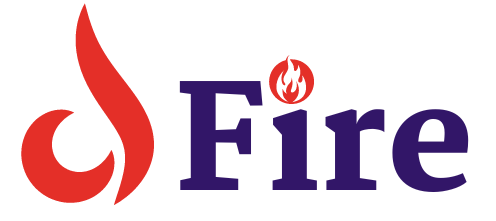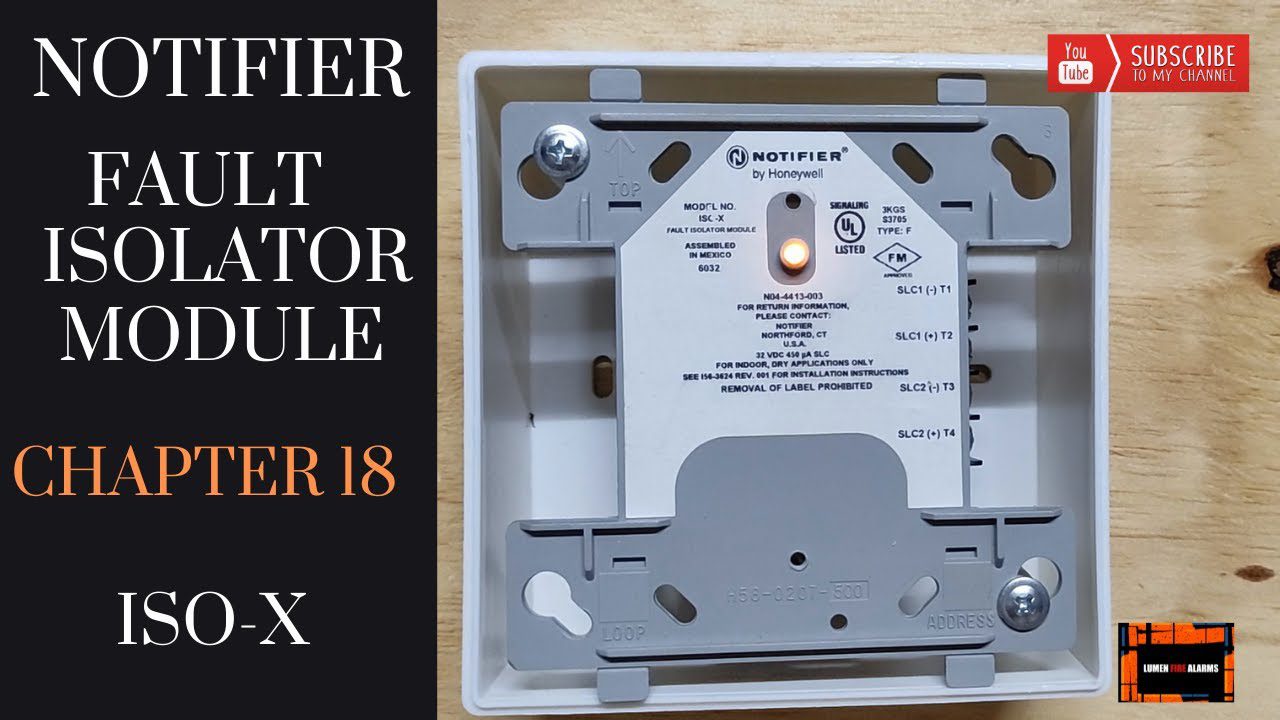A Fire Alarm Isolation Module is a device that isolates a specific section of a fire alarm system. It prevents faults in one section from affecting the entire system.
Fire Alarm Isolation Modules are crucial components in modern fire detection systems. They ensure system integrity by isolating faults to specific areas. This isolation helps maintain the functionality of the rest of the system, enhancing safety. These modules are essential in large buildings where a single fault could compromise the entire alarm network.
Proper installation and maintenance of these modules are vital for optimal performance. They are designed to comply with stringent safety standards, offering reliable protection. Investing in high-quality isolation modules can significantly improve your fire safety strategy.
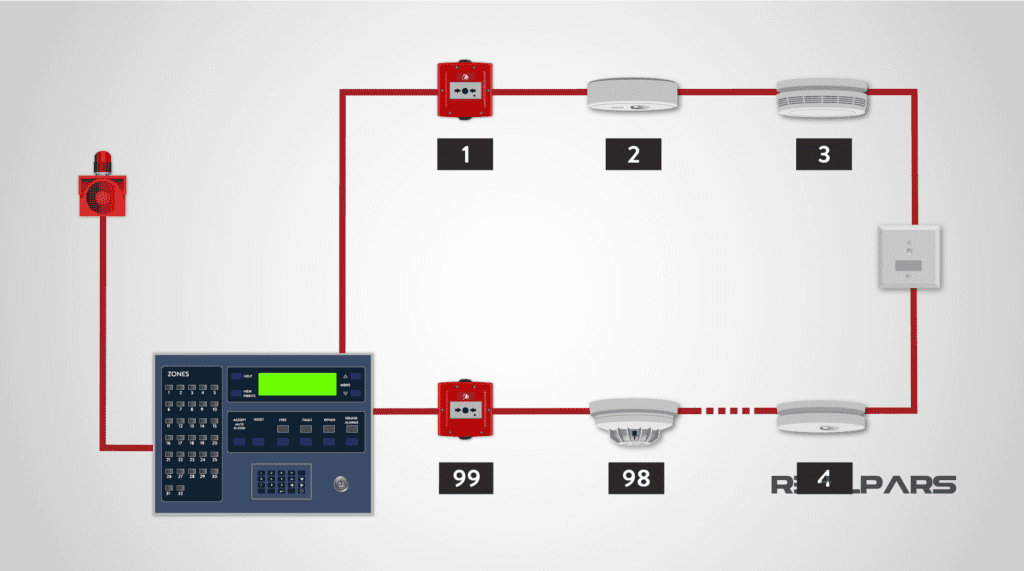
Introduction To Fire Alarm Isolation Modules
Fire safety is crucial in any building. One key component is the fire alarm isolation module. It ensures the fire alarm system works efficiently and effectively. This section will explain the purpose, importance, and basic functionality of these modules.
Purpose And Importance
The main purpose of a fire alarm isolation module is to protect the fire alarm system. It isolates faulty parts of the circuit, preventing total system failure. This ensures that the rest of the system remains operational. Fire alarm isolation modules are important for maintaining safety in buildings. They ensure that a fault in one part does not compromise the entire system.
Basic Functionality
Fire alarm isolation modules work by monitoring the electrical circuit. If a fault is detected, the module isolates the faulty section. This prevents the fault from affecting other parts of the system. The module then sends a signal to the control panel. The control panel alerts maintenance personnel to the issue. This quick response helps in fixing the fault promptly.
Below is a table showing the key features and benefits of fire alarm isolation modules:
| Feature | Benefit |
|---|---|
| Fault Isolation | Prevents system-wide failure |
| Signal to Control Panel | Quick fault detection |
| Easy Maintenance | Ensures prompt repairs |
Fire alarm isolation modules are critical components. They keep the fire alarm system functional during faults. They ensure the safety of the building and its occupants.
Key Features
The Fire Alarm Isolation Module is an essential component in fire safety systems. It ensures the integrity and reliability of the fire alarm network. This module helps isolate faulty sections, preventing complete system failure.
Types Of Isolation Modules
There are various types of isolation modules available. Each type is designed for specific applications and environments.
- Single-Channel Isolation Module: Suitable for small fire alarm systems.
- Multi-Channel Isolation Module: Used in larger systems, offering multiple isolation points.
- Addressable Isolation Module: Can be programmed for specific locations within the network.
- Conventional Isolation Module: Works with non-addressable fire alarm systems.
Technical Specifications
The technical specifications of a fire alarm isolation module are crucial for its performance. Here are some common specifications:
| Specification | Details |
|---|---|
| Operating Voltage | 24V DC |
| Current Consumption | 5mA |
| Operating Temperature | -10°C to 50°C |
| Dimensions | 4.5 x 4.5 x 1 inches |
| Weight | 150 grams |
These specifications ensure the module fits seamlessly into the existing fire alarm system. The operating voltage and current consumption are especially important for efficient performance.
Installation Guidelines
Proper installation of the Fire Alarm Isolation Module is crucial. It ensures optimal performance and safety. This section provides clear, step-by-step instructions to help you install the module correctly.
Pre-installation Requirements
Before installing the Fire Alarm Isolation Module, gather the necessary tools and materials.
- Screwdriver
- Wire stripper
- Mounting screws
- Electrical tape
- User manual
Ensure the power supply is turned off. This prevents any electrical accidents. Check that the Fire Alarm Control Panel is compatible with the isolation module. Verify the module’s location. It should be accessible and free from obstructions.
Step-by-step Installation
- Mount the Module: Secure the module to the wall using mounting screws. Ensure it is level and stable.
- Connect the Wires: Strip the wires and connect them to the appropriate terminals. Follow the wiring diagram in the user manual.
- Secure Connections: Use electrical tape to secure and insulate the wire connections.
- Power On: Turn on the power supply. Check the module’s indicator lights to ensure it is functioning properly.
- Test the System: Conduct a system test to verify the module’s operation. Follow the test procedures outlined in the user manual.
By following these installation guidelines, you ensure the Fire Alarm Isolation Module operates effectively. Always refer to the user manual for specific instructions.
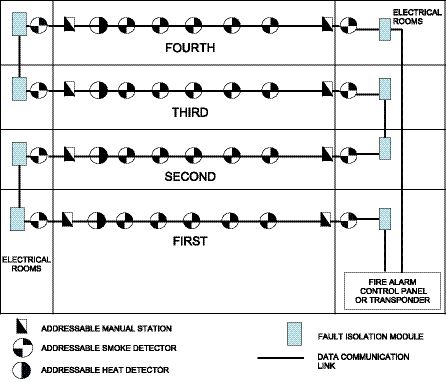
Credit: www.canadianconsultingengineer.com
Safety Standards
Fire Alarm Isolation Modules are vital for building safety. These devices ensure that fire alarms function correctly. Understanding safety standards helps in choosing the right module.
Regulatory Compliance
Regulatory compliance ensures that Fire Alarm Isolation Modules meet specific safety rules. These rules are set by authorities to protect buildings and people. Non-compliance can lead to severe penalties and risks.
Key regulations include:
- NFPA 72: National Fire Alarm and Signaling Code
- UL 864: Standard for Control Units and Accessories for Fire Alarm Systems
- EN 54: European Standard for Fire Detection and Fire Alarm Systems
Certification Requirements
Certification shows that a product meets safety standards. It is essential for Fire Alarm Isolation Modules to have proper certifications.
| Certification | Authority |
|---|---|
| UL | Underwriters Laboratories |
| CE | Conformité Européenne |
| FM | Factory Mutual |
Certified modules ensure reliability and efficiency. They also meet the safety standards required by law.
Maintenance And Testing
Keeping your Fire Alarm Isolation Module in top condition is crucial for safety. Regular maintenance and testing ensure the system works properly. This section covers routine maintenance and testing procedures for these modules.
Routine Maintenance
Performing regular maintenance helps in the early detection of issues. Follow these steps:
- Inspect the module and its connections monthly.
- Check for any physical damage or wear.
- Ensure there is no dust or debris on the module.
- Verify all indicator lights are functioning.
- Replace batteries if the system has them.
Testing Procedures
Testing ensures the module works in an emergency. Follow these procedures:
- Activate the fire alarm system manually.
- Observe if the isolation module responds correctly.
- Check if the connected alarms and indicators activate.
- Record any anomalies or failures.
- Reset the system after testing.
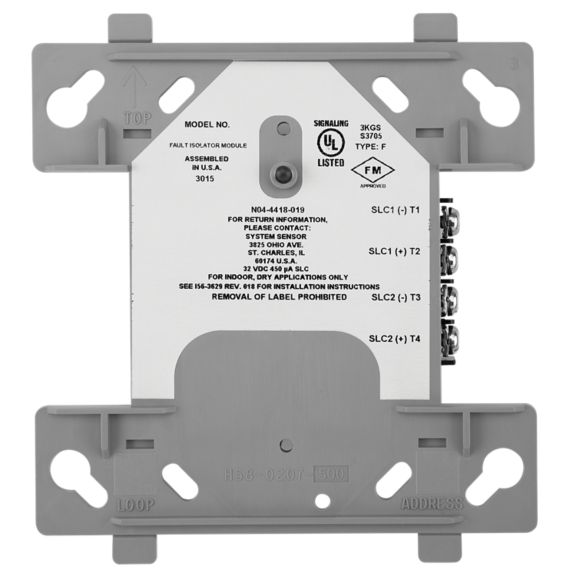
Troubleshooting Common Issues
Fire Alarm Isolation Modules are vital for safety systems. They help isolate faulty sections. This ensures the rest of the system stays active. Troubleshooting these modules can sometimes be tricky. Here, we will explore some common issues and their solutions.
Identifying Problems
Identifying problems with Fire Alarm Isolation Modules is the first step. Look for these common symptoms:
- System alarms frequently trigger without cause.
- Some alarms don’t activate during tests.
- The module shows error codes or indicators.
Use the control panel to check for faults. Note the error codes for specific issues.
Solutions And Fixes
Once you identify the problem, you can start fixing it. Here are some solutions:
| Problem | Solution |
|---|---|
| Frequent false alarms | Check for dust or debris in the sensors. |
| Module not responding | Ensure all connections are secure. |
| Error codes displayed | Refer to the manual for code meanings. |
For persistent issues, consider these steps:
- Turn off the power to the system.
- Inspect wiring for damage or corrosion.
- Replace any faulty components.
- Update the module firmware if available.
Regular maintenance can prevent many issues. Clean the sensors and check connections monthly.
Integration With Other Systems
The Fire Alarm Isolation Module enhances safety. It works well with other systems. This integration is vital for modern buildings. It ensures quick responses to emergencies.
Compatibility
The module is compatible with many systems. These include HVAC, lighting, and security. Compatibility ensures seamless operation. It also reduces the risk of system conflicts.
| System Type | Compatibility Level |
|---|---|
| HVAC | High |
| Lighting | Medium |
| Security | High |
Best Practices
Follow these best practices for integration:
- Ensure all systems are updated.
- Conduct regular testing.
- Maintain clear documentation.
Proper integration improves efficiency. It also enhances safety. These steps are easy but effective. Implement them for best results.
Future Trends
The future of Fire Alarm Isolation Modules is promising. New technologies and industry trends are shaping their development. Let’s explore some key advancements and industry trends.
Technological Advances
Technological advances are significantly improving fire alarm isolation modules. These improvements enhance reliability and functionality. Here are some key technological trends:
- Wireless Connectivity: Modern isolation modules support wireless communication. This reduces installation time and costs.
- IoT Integration: Integration with the Internet of Things (IoT) allows real-time monitoring. This ensures faster response times during emergencies.
- Advanced Diagnostics: New modules come with self-diagnostic features. These features detect and report issues automatically.
- Energy Efficiency: Energy-efficient modules are becoming popular. They use less power and have a longer lifespan.
Industry Developments
Industry developments are also influencing fire alarm isolation modules. These trends are driving innovation and enhancing safety standards. Key industry trends include:
- Stricter Regulations: Governments are implementing stricter fire safety regulations. This pushes manufacturers to develop better isolation modules.
- Standardization: Industry standards are being established. These standards ensure compatibility and interoperability among different systems.
- Training and Certification: There is a growing focus on training and certification. Professionals are getting better equipped to handle advanced systems.
- Global Expansion: The demand for fire alarm isolation modules is increasing globally. This is especially true in developing countries.
These trends indicate a bright future for fire alarm isolation modules. Technological advances and industry developments are making them more effective and reliable.
Frequently Asked Questions
What Is A Fire Alarm Isolation Module?
A fire alarm isolation module isolates specific areas during a fire. It prevents the entire system from triggering.
How Does A Fire Alarm Isolation Module Work?
The module isolates fire-affected zones. It ensures that only the targeted alarms activate, preventing system-wide alerts.
Why Use A Fire Alarm Isolation Module?
It prevents false alarms from spreading. It ensures that only affected zones are alerted, reducing unnecessary panic.
Where Is A Fire Alarm Isolation Module Installed?
It’s installed in areas prone to false alarms. Common places include kitchens, laboratories, and industrial areas.
Conclusion
Enhancing fire safety is crucial for any building. A fire alarm isolation module ensures efficient monitoring and response. It’s a vital component for protecting lives and property. Prioritize installing a reliable fire alarm isolation module in your safety system. Doing so can make a significant difference during emergencies.

I’m Abdus Sobur, a highly skilled and professional Fire Safety Officer with a passion for safeguarding lives and property. Over the course of my career, I’ve conducted numerous successful fire safety audits, earning a reputation for excellence in ensuring public safety.
In addition to my role as a Fire Safety Officer, I’m also dedicated to raising awareness about the importance of fire safety. Through my blog, I share insights into the functions of different fire safety equipment, aiming to empower individuals with the knowledge they need to protect themselves and their communities.
I’m driven by a deep commitment to promoting fire safety awareness and preventing fire-related incidents.
